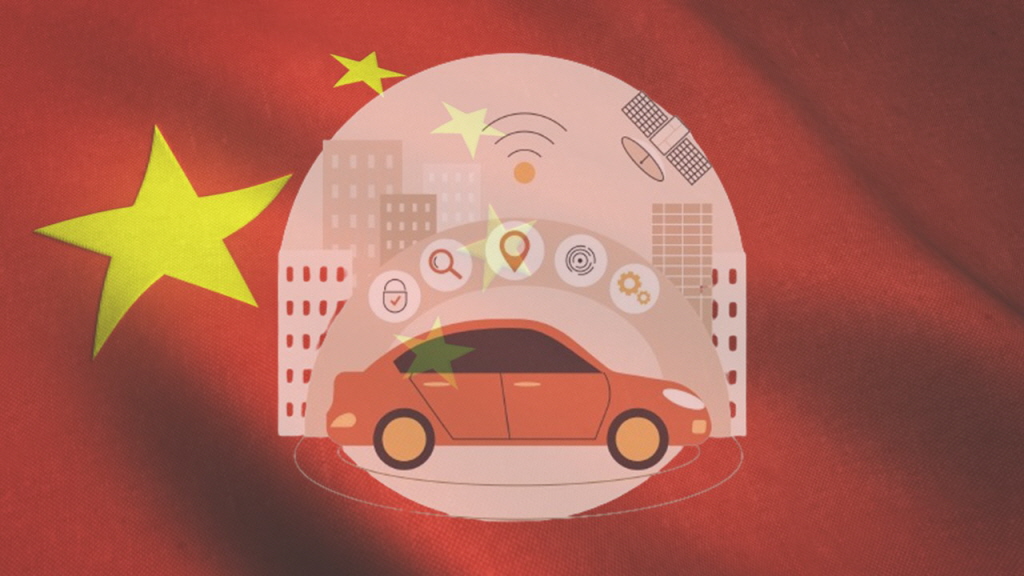중국 기업들이 자율주행 레벨 2.99라고 자칭하는 도심NOA 서비스에 대한 중국 소비자의 높은 수요를 부응하고, 서비스를 선제적으로 제공하기 위해 관련 기술 개발에 총력을 다할 것이라는 전문가의 분석이 제기됐다.
 자율주행 레벨 2 도심NOA 서비스, 中 자동차 기술경쟁 핵심축 대두
자율주행 레벨 2 도심NOA 서비스, 中 자동차 기술경쟁 핵심축 대두
中 자동차 산업, 자율주행 레벨 2~3 기술 공급 기업 중심 재개편 전망
중국 기업들이 자율주행 레벨 2.99라고 자칭하는 도심NOA 서비스에 대한 중국 소비자의 높은 수요를 부응하고, 서비스를 선제적으로 제공하기 위해 관련 기술 개발에 총력을 다할 것이라는 전문가의 분석이 제기됐다.
이서현 한국자동차연구원(이하 한자연) 선임연구원은 ‘도심NOA로 본 중국 자율주행 기술경쟁 현황’을 주제로 한 보고서에서 2023년 중국에서는 자율주행 레벨 2급 도심NOA가 자동차 제조사 간 기술경쟁 핵심축으로 대두되었으며 향후에도 도심NOA는 중국 내 기술경쟁 핵심축으로 작용할 것이라 전망했다.
NOA(Navigate on Autopilot)는 차량이 도로에서 스스로 조향·정지·가속 등을 할 수 있게 하는 기능이며 도심NOA(城市NOA)는 도시 도로에서 제공되는 내비게이션 주행 보조 기능을 의미한다.
도심NOA는 실시간으로 복잡하게 변화하는 시내도로 환경을 반영해야 하므로 고속도로NOA에 비해 처리해야 하는 정보가 복잡·다양하여 난이도가 수 배 이상이라고 평가되고 있다.
중국 각 제조사는 도심NOA 서비스 명칭 및 범위를 달리 정의하고 있으며, 레벨 3에 매우 근접한 기술이라는 점을 강조하기 위해 레벨 2.99라는 표현을 사용하는데, 이는 실제 성능·범위를 떠나 개념상 Tesla 자율주행 서비스 중 FSD에 근접하는 수준으로 알려져 있다.
다만, 이서현 선임연구원은 2.99라는 표현은 실제 기술 수준을 의미하는 것이 아닌 중국 내수시장 한정 마케팅 수사라는 점에 주의가 필요하다고 강조했다.
도심NOA의 기술개발이 탄력을 받은 이유는 2023년 중국 전기차 구매보조금 폐지 등으로 가격경쟁이 격화되며 중국 자동차 제조사는 제품 차별화와 더불어 고부가가치화 및 중국 소비자 수요에 부응하기 위함으로 분석됐다.
중국 현지 언론 조사에 따르면 중국 소비자들은 차량 구매 시 자신에게 도심NOA 기술이 얼마나 필요한지를 따지기보다 최신 기술이 적용된 차를 구매하는 행위 자체에 높은 가치를 두고 차량 구매를 결정하고 있다.
이에 중국 자동차 제조사와 Tier1 등은 도심NOA 서비스 제공 목표를 경쟁적으로 발표하고 있으며 시장·산업에 미치는 영향력을 보면 도심NOA가 중국 자율주행 기술경쟁의 핵심이라고 볼 수 있다.
2023년 말 현재 다수의 중국 기업은 도심NOA 서비스 제공 목표를 달성하지 못한 상황이나 향후에도 도심NOA는 중국 내 기술경쟁 핵심축으로 작용할 전망이다.
도심NOA 기술개발에서 제조사 LiAuto, Xpeng과 HUAWEI 등이 앞서 있다고 평가되지만, 이들 또한 서비스 제공 목표를 하향 조정하고 있으며 중국 업계는 지연 원인으로 크게 두 가지를 지목했다.
첫 번째 원인은 자국 기업 기술 수준상 고정밀지도 없는 도심NOA 서비스를 제공하기 아직 어렵다는 것이다.
고정밀지도는 도로곡률·차선 위치 등 도로 정보, 도로 인프라 등 환경정보, 신호등 상태·교통량 등 실시간 동적 정보를 포함하는 고해상도 지도로 자율주행차 센서 고장·악천후 등으로 발생한 정보 한계를 보완하는 요소다.
2023년 상반기 Xpeng, HUAWEI 등은 고정밀지도에 의존하지 않는 자율주행시스템을 개발할 것이라고 밝혔으나, 고정밀지도를 활용하지 않고 레벨 2 이상 자율주행 서비스를 제공할 수 있는지 의문이 제기되었다.
현지 언론도 NOA 서비스 테스트 결과 복잡한 도로 환경이나 고속도로 진·출입로 등에서는 인간 운전자가 대신해야 하는 경우가 많아 고정밀지도에 의존하지 않는 자율주행은 보완이 필요하다고 평가했다.
두 번째로는 중국 기업의 클라우드 컴퓨팅·알고리즘 기술 수준이 아직 부족하다는 것이다.
도심NOA 기술의 신속성·정확성은 차량 자체의 연산능력 외에도 빅데이터를 수집·저장·분석할 수 있는 클라우드 컴퓨팅 능력, 데이터를 처리하는 알고리즘 기술 수준 등에 의해 결정된다.
중국 업계는 자국 기업의 클라우드 컴퓨팅·알고리즘 기술 수준이 Tesla보다 약 2~3년 뒤처져 있다고 판단했다.
이렇듯 개발 지연에도 불구하고 도심NOA에 대한 중국 소비자의 수요가 매우 높아, 중국 업계는 향후 3년간 도심NOA가 자동차 제조사 간 기술경쟁 핵심축으로 자리 잡을 것으로 보인다.
아직 기업 간 기술 우열 차이는 크지 않으나 중국 업계는 초기에 더 많은 이용자·데이터를 확보한 승자가 상당한 우위를 차지할 것으로 보고 도심NOA 관련 기술개발에 집중하리라 전망된다.
초기에 도심NOA 서비스가 적용된 차량을 대량 판매한 제조사가 데이터 확보전에서 앞서면서, 타사와 기술 격차를 벌리고 시장을 주도하고, 컴퓨팅·알고리즘 분야에 빨리 투자할수록 우위가 공고해질 것으로 예상되고 있다.
도심NOA 기술경쟁 현황·중국 정부 정책을 볼 때 중국의 자동차 산업은 신뢰가능한 자율주행 레벨 2~3 기술을 선제 제공하는 기업을 중심으로 재개편될 전망이다.
2024년 중국 소비자는 다양한 도시에 도심NOA 서비스를 제공하는 차량을 선호할 것으로 예상되며 LiAuto·Xpeng 등 제조사는 BYD를 상대로 도심NOA에서 비교우위를 확보하기 위해 총력을 다할 것으로 보인다.
현재 중국 내수 승용차 시장은 BYD가 타사를 압도하는 시장점유율(2023년 11월 기준 30%)을 차지하고 있는데, LiAuto·Xpeng 등은 BYD를 상대로 비교우위를 점할 수 있는 분야를 스마트드라이빙·자율주행이라고 판단하고 있다.
BYD는 전동화 기술에 강점이 있으나 스마트드라이빙·자율주행 등 기술에 상대적 약점이 있다고 평가되기 때문인데, LiAuto와 Xpeng이 도심NOA에 투자한 비용만큼 소기의 성과를 거둘 수 있을지 귀추가 주목된다.